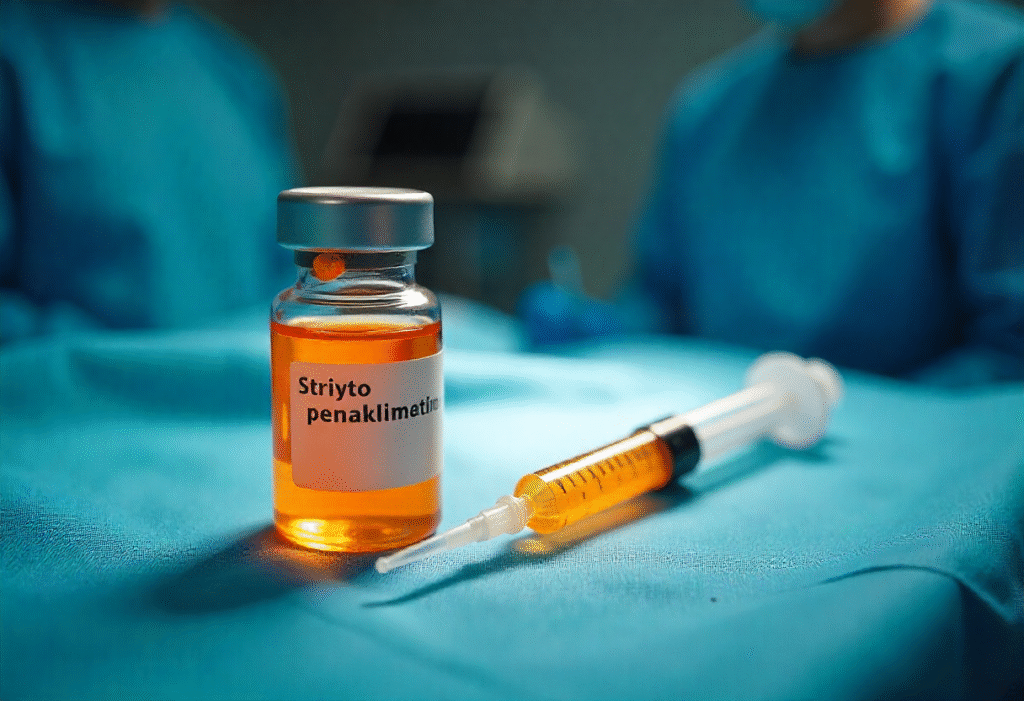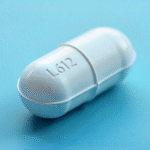Strepto penicillin has been a cornerstone of modern antibiotic therapy for decades. This trusted medication, derived from the penicillin group, plays a vital role in treating a variety of bacterial infections. Its effectiveness and safety profile have made it a go-to choice for healthcare providers worldwide. From respiratory tract infections to skin conditions, strepto penicillin continues to save countless lives every year.
Strepto Penicillin Overview
Strepto penicillin belongs to the beta-lactam class of antibiotics, characterized by their ability to target bacterial cell walls. Its name partly reflects its origins — with “strepto” hinting at the involvement of Streptomyces species in its history. While related to other penicillins, strepto penicillin has unique applications and effectiveness against specific bacterial strains.
Discovery and Development
The roots of strepto penicillin trace back to the pioneering antibiotic discoveries of the 20th century. Following Alexander Fleming’s breakthrough with penicillin, scientists explored other natural antibiotic sources. Strepto penicillin’s refinement came from identifying and enhancing compounds effective against penicillin-sensitive bacteria, leading to its widespread adoption in clinical settings.
Medical Uses of Strepto Penicillin
Doctors prescribe strepto penicillin for infections caused by susceptible bacteria. These include strep throat, syphilis, certain skin infections, and respiratory illnesses. In some cases, it is also used to prevent rheumatic fever in patients with a history of the disease. Its targeted action makes it particularly valuable when the exact bacterial cause is known.
How Strepto Penicillin Works
The antibiotic works by binding to specific proteins in bacterial cell walls, disrupting their structure and leading to cell death. This mechanism is especially effective against Gram-positive bacteria, which have thick cell walls rich in peptidoglycan. By attacking this structural component, strepto penicillin halts bacterial growth and allows the immune system to clear the infection.
Benefits of Strepto Penicillin
Strepto penicillin is valued in medicine for its rapid and reliable results. Its ability to quickly halt bacterial growth reduces the duration of illness and speeds up recovery. For patients suffering from severe infections, this fast action can be lifesaving. Additionally, its targeted nature means it can treat specific bacteria without affecting as much of the beneficial gut flora as broader-spectrum antibiotics might. This precision minimizes some unwanted side effects and supports faster overall recovery.
Side Effects and Precautions
Like any medication, strepto penicillin is not without risks. The most common adverse effects include mild gastrointestinal upset, such as nausea or diarrhea. More concerning, though rarer, are allergic reactions. These can range from skin rashes to severe anaphylaxis, which requires immediate medical attention. People with a known allergy to penicillin should avoid strepto penicillin entirely. Special care is also necessary for patients with kidney problems, as the drug is primarily eliminated through the renal system.
Strepto Penicillin vs Other Antibiotics
Compared with other antibiotics, strepto penicillin often shows higher effectiveness against certain Gram-positive bacteria. For example, while amoxicillin covers a broader range of bacteria, strepto penicillin may be more potent for specific strains of Streptococcus. In contrast, tetracycline works differently, targeting bacterial protein synthesis rather than cell walls, making it a choice when penicillin resistance is present. Each antibiotic has its own niche, and the decision depends on the type of infection and patient needs.
Dosage and Administration
Strepto penicillin is most commonly administered via injection, although oral formulations exist in some regions. The dosage depends on the severity and type of infection. For example, a single large intramuscular dose may be used to treat syphilis, whereas repeated smaller doses may be necessary for respiratory infections. It’s crucial to complete the prescribed course to ensure bacteria are fully eradicated and resistance does not develop.
Resistance Concerns
Antibiotic resistance is one of the most pressing challenges in modern medicine, and strepto penicillin is not immune to this threat. Overuse, misuse, and incomplete treatment courses all contribute to the rise of resistant bacterial strains. Doctors and patients must work together to use strepto penicillin responsibly, ensuring it remains effective for future generations.
Strepto Penicillin in Veterinary Medicine
Strepto penicillin is also a valuable tool in veterinary care. It is used to treat infections in livestock, pets, and even certain exotic animals. Farmers often rely on it to control diseases in cattle, pigs, and poultry, which can otherwise cause significant economic losses. However, veterinary use must be carefully monitored to prevent antibiotic residues in food products and to reduce resistance development.
Global Availability
While strepto penicillin is available worldwide, access can vary. In some countries, it is strictly prescription-only, ensuring responsible use. In others, it may be more readily available over the counter, which carries a higher risk of misuse. Organizations like the World Health Organization promote guidelines to balance accessibility with antibiotic stewardship.
Combination Therapies
Doctors sometimes pair strepto penicillin with other antibiotics to boost effectiveness. This approach, called synergy, can target a broader range of bacteria or prevent resistance. For example, combining it with streptomycin has historically been effective in certain cases of bacterial endocarditis.
Strepto Penicillin for Skin Infections
Skin infections like cellulitis and impetigo respond well to strepto penicillin when caused by susceptible bacteria. Rapid treatment prevents the infection from spreading deeper or entering the bloodstream. In some cases, topical and oral/injectable treatments are combined for better outcomes.
Strepto Penicillin in Respiratory Illnesses
Conditions such as pneumonia, bronchitis, and strep throat can be effectively managed with strepto penicillin. For strep throat in particular, it not only resolves symptoms but also prevents complications like rheumatic fever, which can have long-term heart effects.
Pregnancy and Strepto Penicillin
For pregnant women, strepto penicillin is generally considered safe when prescribed by a doctor. It can be essential for treating infections that could otherwise harm both mother and baby. However, the benefits and risks must always be weighed carefully.
Storage and Shelf Life
Proper storage of strepto penicillin is critical to maintaining its effectiveness. The injectable form should be kept in a cool, dry place, often refrigerated, and protected from light. Once prepared for use, it should be administered promptly to avoid degradation.
Economic Impact
Beyond individual health benefits, strepto penicillin has a significant economic role. By treating infections quickly and effectively, it reduces the need for extended hospital stays and costly complications. In developing countries, affordable antibiotics like strepto penicillin can be the difference between life and death.
Myths and Misconceptions
Some believe strepto penicillin can treat viral infections, such as colds or flu. This is false. Like all antibiotics, it works only on bacteria, not viruses. Misusing it for viral illnesses wastes medication and promotes resistance.
First-Hand Experience
Many patients report rapid relief from symptoms within 24–48 hours of starting strepto penicillin. In rural healthcare settings, its injectable form is especially valued for delivering quick results when other options are unavailable.
Doctor’s Recommendations
Physicians stress that strepto penicillin should only be taken under professional supervision. Self-medicating or stopping treatment early can lead to dangerous relapses and resistant bacteria.
Future of Strepto Penicillin
Research continues into new penicillin derivatives and formulations that can combat resistant bacteria. Long-acting versions and combination therapies hold promise for the next generation of antibiotics.
Also read: L612: Unlocking Its Power and Potential
FAQs
What infections can strepto penicillin treat?
It is used for bacterial infections like strep throat, syphilis, skin infections, and some respiratory diseases.
Is strepto penicillin safe for children?
Yes, when prescribed by a doctor, it is generally safe for children with appropriate dosage adjustments.
Can I take strepto penicillin if I’m allergic to penicillin?
No, anyone allergic to penicillin should avoid it and inform their healthcare provider immediately.
How is strepto penicillin given?
It is often given as an injection, but oral forms may be available in some regions.
Does strepto penicillin work for viral infections?
No, it is effective only against bacterial infections, not viruses.
What should I do if I miss a dose?
Contact your doctor. Never double up doses without medical advice.
Conclusion
Strepto penicillin remains one of the most important antibiotics in modern medicine. Its targeted effectiveness, history of saving lives, and role in both human and animal health make it indispensable. However, responsible use is essential to keep it effective in the face of growing antibiotic resistance.


